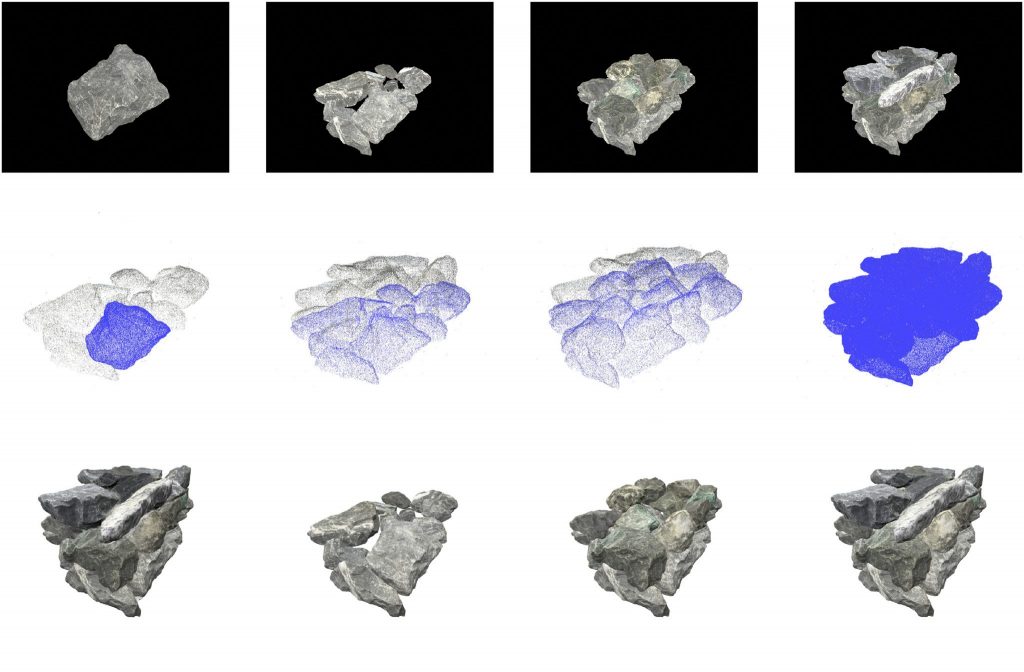Stone masonry has been a widely used construction method for centuries, and its durability and aesthetics have made it a popular choice even in modern times. With the advancement of digital technologies, the creation of digital twins of stone masonry structures has become possible. Digital twins are virtual replicas of real-world objects that can be used for various purposes, such as simulation, monitoring, and maintenance.
In our research study, we presented an image-based pipeline for generating geometrical digital twins (GDTs) of stone masonry elements with detail down to the stone level. We showcased our methodology’s robustness and feasibility for full-size elements. Our method has the potential to reduce uncertainties related to the stone size, shape, and arrangement when comparing 3D numerical simulations of these walls to experimental results.
Our pipeline involves acquiring RGB images of the individual stones and of the wall during the construction phase. We then use structure from motion (SfM) to generate 3D source and destination models, which are registered to form the GDT through non-linear least squares and 2D point feature correspondences detected on the SfM images.

Our method contrasts with traditional techniques that register point clouds using 3D point descriptors. Because of the robustness of image feature descriptors, we found that using 2D instead of 3D point features facilitates the automation of the GDT generation.
To benchmark our algorithm, we compared the results through a Euclidean–distance-based proposed metric with a known 3D textured model from which images were synthetically generated. Our results demonstrate the robustness and feasibility of our method for full-size elements, wherein GDTs were generated for dry-stone and stone-mortar systems.
- Article:
- Image-based geometric digital twinning for stone masonry elements [journal link]
- Source code: [source code link]
- Dataset: [dataset link]